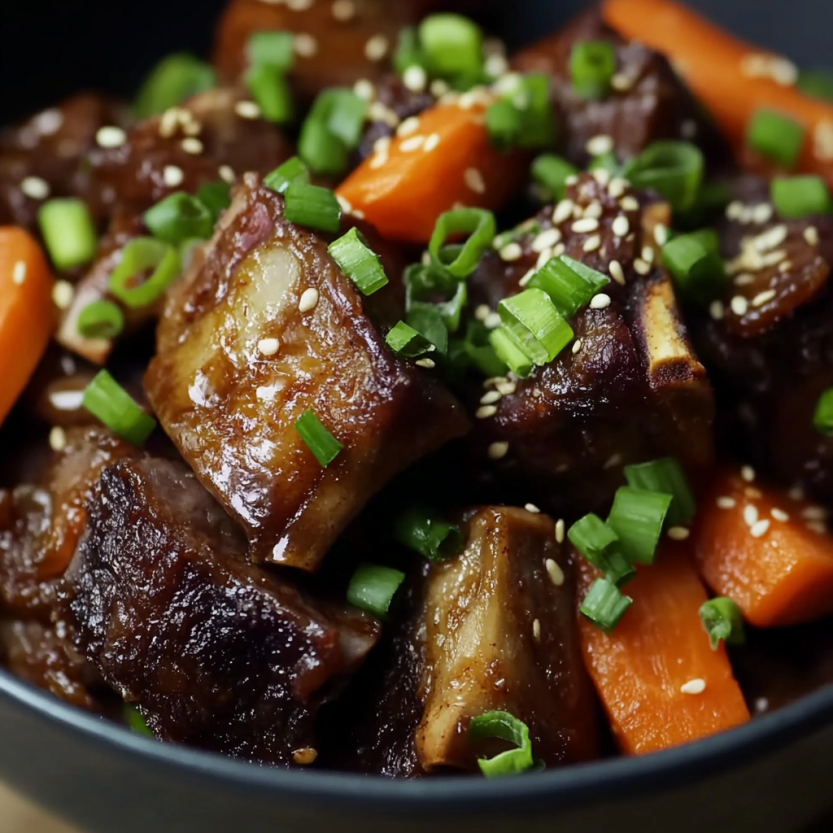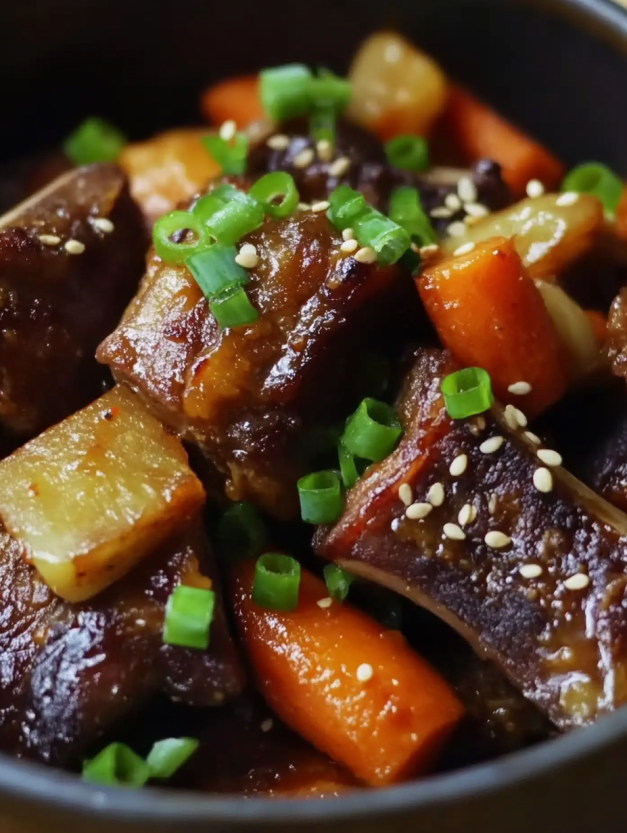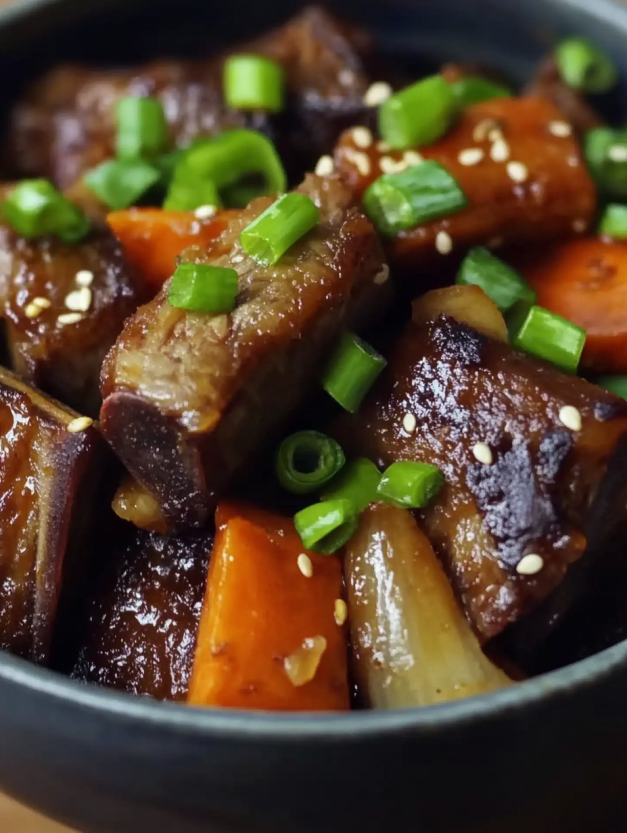 Bookmark
Bookmark
This slow cooked version of Galbi Jjim brings back childhood memories of my mom’s comforting Korean short ribs. Traditionally simmered with soy sauce and sugar, I’ve adapted it with Paleo-friendly ingredients like coconut aminos and blended Asian pear. The result is fall-apart tender beef infused with rich, umami-packed flavor.
I grew up eating my mom’s Galbi Jjim on special weekends and holidays. This version captures those same flavors with simpler prep and wholesome ingredients.
Ingredients
- Grass fed beef short ribs: rich marbling yields tender juicy meat
- Carrots: add natural sweetness and color
- Daikon radish: traditional in Korean stews for its mild earthy bite
- Asian pear: blended for natural sweetness and helps tenderize
- Bone broth: boosts savory depth and adds nourishment
- Coconut aminos: soy free alternative with mild sweetness
- Garlic cloves: minced fresh for aromatic warmth
- Ginger: brightens the sauce with zingy notes
- Fish sauce: delivers subtle umami complexity
- Rice vinegar: adds gentle acidity to balance sweetness
- Salt and pepper: use salt generously for seasoning omit pepper for AIP
- Green onions: chopped for fresh sharp finish
- Sesame seeds: optional for added texture and nuttiness
Step-by-Step Instructions
- Trim and Prepare the Short Ribs:
- Slice short ribs across the bone into individual segments to help them cook evenly and stay tender
- Season the Meat:
- Sprinkle salt over the ribs and place them at the bottom of the slow cooker in a single layer to ensure full sauce coverage
- Add the Vegetables:
- Layer chopped carrots and daikon radish over and around the short ribs so they cook evenly and soak up the flavorful juices
- Create the Sauce Base:
- In a food processor or blender pulse the Asian pear until completely smooth then pour into a bowl and combine with broth coconut aminos garlic ginger fish sauce and vinegar whisking thoroughly
- Pour Over and Slow Cook:
- Pour the sauce mixture over the meat and vegetables ensuring everything is coated then cover and cook on low for 9 hours
- Finish and Serve:
- Skim any surface fat for a cleaner finish then sprinkle with chopped green onions and optional sesame seeds before serving hot
 Bookmark
Bookmark
You Must Know
The blended Asian pear is my favorite ingredient here not only does it replace sugar but it adds a depth and softness to the beef that reminds me of my mother’s careful touch in the kitchen
Storage Tips
Store leftovers in an airtight container in the fridge for up to four days The flavors continue to deepen and the meat stays incredibly tender To freeze cool completely and pack into a freezer safe container Thaw in the fridge overnight and reheat gently on the stovetop
Ingredient Substitutions
You can use tamari in place of coconut aminos if not following a soy free diet If you do not have daikon substitute with turnip or more carrot for similar texture Bone broth can be swapped for any beef broth you enjoy just choose a low sodium version
Serving Suggestions
Serve the short ribs over steamed rice cauliflower rice or mashed sweet potatoes for a full meal Garnish with fresh green onions and extra sesame seeds for a beautiful finish Pair with kimchi or lightly pickled vegetables to cut through the richness
 Bookmark
Bookmark
Cultural Context
Galbi Jjim is a beloved Korean dish often served during holidays and family gatherings Its luxurious flavor and tender meat symbolize warmth comfort and celebration This slow cooker version brings tradition into busy kitchens
Frequently Asked Questions About Recipes
- → Can I use a regular pear instead of Asian pear?
Yes, a ripe regular pear can work just fine to add natural sweetness and tenderize the meat.
- → What cut of short ribs is best?
Use bone-in short ribs cut across the bone into sections. This cut delivers rich flavor and tender texture after slow cooking.
- → Can this be made ahead of time?
Absolutely. The flavors deepen after a day in the fridge. Reheat gently on the stove or in a low oven.
- → What can I use instead of coconut aminos?
You can substitute tamari or low-sodium soy sauce if you're not avoiding soy products.
- → Do I need to sear the ribs first?
It’s optional. While not required, searing can enhance the flavor by adding caramelization before slow cooking.
- → Can I cook this on high heat to save time?
It’s best cooked on low to achieve fall-apart tenderness. High heat may make the meat less juicy.
